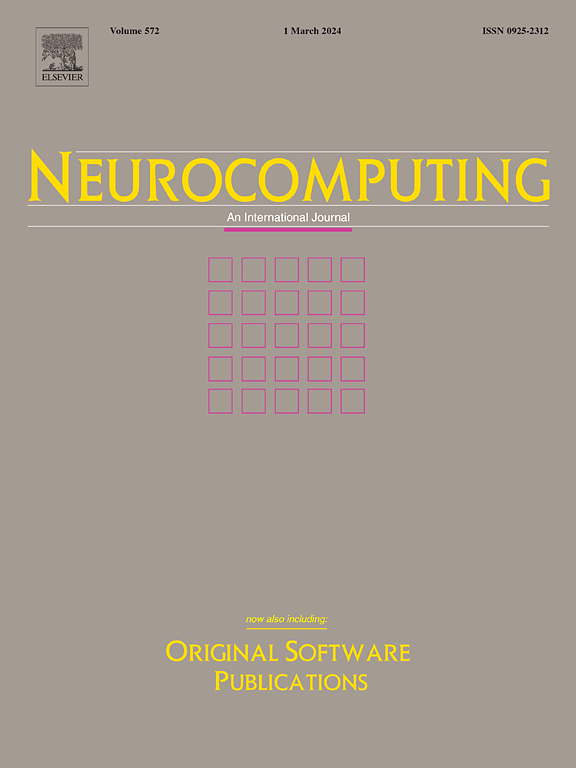自适应脉冲卷积网络解码运动图像模式
IF 5.5
2区 计算机科学
Q1 COMPUTER SCIENCE, ARTIFICIAL INTELLIGENCE
引用次数: 0
摘要
运动图像解码对于脑机接口技术的发展至关重要。然而,现有的模型往往容易受到噪声的影响,并且缺乏生物学上的可解释性。在这项研究中,我们引入了自适应触发阈值spike卷积网络(AFTSC-Net),该网络通过将自适应触发率机制与卷积神经网络(cnn)的空间特征提取能力相结合,增强了spike神经网络(snn)的生物学相关性。此外,我们通过增强的尖峰神经元机制来改进代理梯度函数,显著降低了计算功耗,同时提高了从脑电图(EEG)信号中识别MI模式的准确性。为了验证AFTSC-Net的有效性,我们对36名来自足球、篮球和乒乓球的优秀运动员进行了实验,对各种运动图像任务中的神经活动进行了全面分析。该模型不仅在运动员数据集上表现优异,而且在公共基准数据集上也取得了最先进的结果,在准确性和计算效率方面超越了现有方法。这些发现突出了生物启发神经网络在提高脑机接口解码精度和鲁棒性方面的潜力,为实时脑机接口应用设定了新的标准。本文章由计算机程序翻译,如有差异,请以英文原文为准。
Adaptive spiking convolutional network for decoding motor imagery patterns
Motor imagery (MI) decoding is crucial for the advancement of brain-computer interface (BCI) technologies. However, existing models often suffer from susceptibility to noise and lack biological interpretability. In this study, we introduce the Adaptive Firing Threshold Spiking Convolutional Network (AFTSC-Net), which enhances the biological relevance of spiking neural networks (SNNs) by integrating an adaptive firing rate mechanism with the spatial feature extraction capabilities of convolutional neural networks (CNNs). Additionally, we refined surrogate gradient functions through enhanced spiking neuron mechanisms, significantly reducing computational power consumption while improving the accuracy of MI pattern recognition from electroencephalography (EEG) signals. To validate the efficacy of AFTSC-Net, we conducted experiments with 36 elite athletes from soccer, basketball, and table tennis, performing a comprehensive analysis of neural activity across various motor imagery tasks. The model not only demonstrated superior performance on the athlete dataset but also achieved the state-of-the-art results on public benchmark datasets, surpassing existing methods in terms of accuracy and computational efficiency. These findings highlight the potential of biologically inspired neural networks to enhance MI decoding accuracy and robustness, setting a new standard for real-time BCI applications.
求助全文
通过发布文献求助,成功后即可免费获取论文全文。
去求助
来源期刊

Neurocomputing
工程技术-计算机:人工智能
CiteScore
13.10
自引率
10.00%
发文量
1382
审稿时长
70 days
期刊介绍:
Neurocomputing publishes articles describing recent fundamental contributions in the field of neurocomputing. Neurocomputing theory, practice and applications are the essential topics being covered.
 求助内容:
求助内容: 应助结果提醒方式:
应助结果提醒方式:


